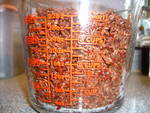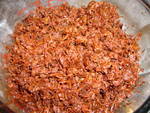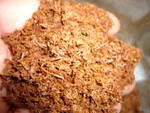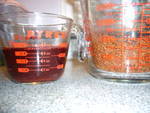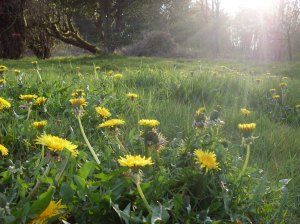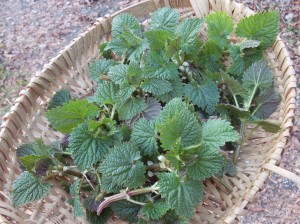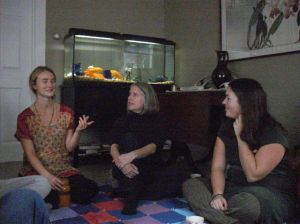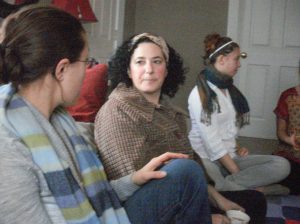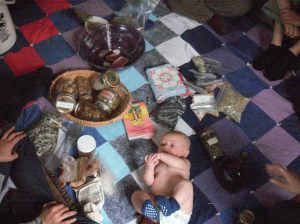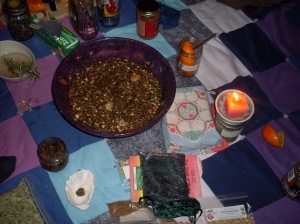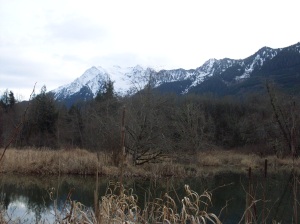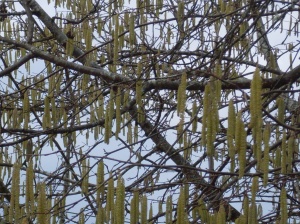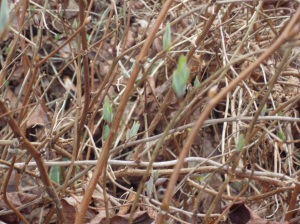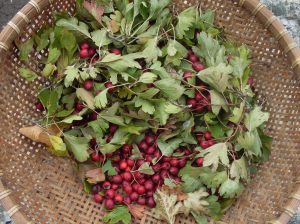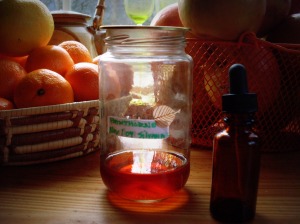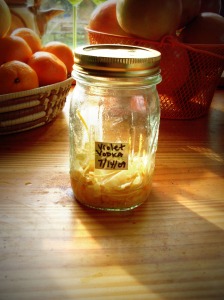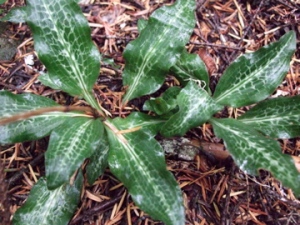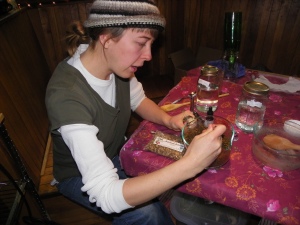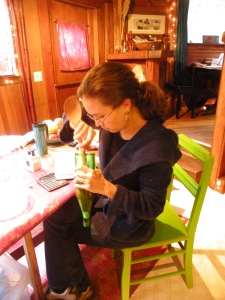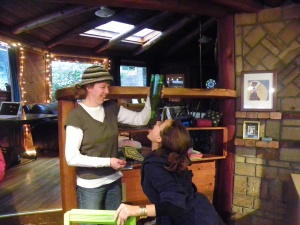Last year at this time my little piece of land was being hit by yet another snow flurry. The many feet of snow that had fallen in December was slowly decreasing yet the whole ground was still blanketed in a thick covering of snow turned ice. Down the valley, towards the Sound the weather was not quite so intense but it was still so cold and the plants were slow growing. That is why this winter has surprised me with its lack of “wintryness.” I was able to begin spring harvesting in earnest weeks ago. I was wandering through the woods down the creek bed towards the river when I saw the first nettle rosettes, the plum tree is heavy with buds about to burst open and early spring salad greens of peppergrass and chickweed are popping up in every bit of bare soil I see. Last week, when we all harvested together it was shocking to find nettle shoots already up to my knee. No plant harkens spring or calls in the season of growth and harvest like nettle. It often one of the first medicinal plants ready to harvest each spring and so perhaps it is not surprising that is is also the plant by which many people are first introduced to herbs and also the plant that has called many wise women to down the path of herbalism. This plant that sprouts first is the woods often sprouts first in our hearts. I call nettle the gateway plant 🙂
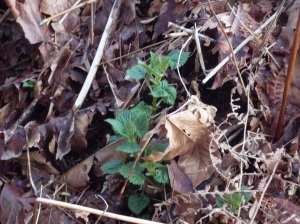
Blessed with an abundance of nettles in my woods this time of year, we eat them almost daily, along with daily infusions at night we eat them in soups and stews and add nettles to our dinner in anyway possible. I have included a few of the best recipes I have come up with over the past few weeks. I apologize for the lack of pictures, I left my camera at Ellen’s, but know that if I included the recipe here it was definitely worth remaking 🙂
To begin, I made a soup, sweetened by the natural sugars found in organic or home grown acorn squash and made creamy with a “healthy” portion of cultured cream cheese. Topped with roasted squash seeds, its a savory treat on these chilly early spring nights.
Cream Of Nettle Soup
1 acorn squash- halved and baked-reserve seeds
1 onion-diced
4 cloves garlic
1/2 inch piece of ginger grated
Heaping bowl of young nettle tops
1/2 tsp coriander seeds
1/8 tsp nutmeg
6 oz cream cheese
water or broth to cover
Begin by baking the squash in a 400 degree oven until it is soft. In a pot, saute onions garlic and ginger until translucent. Add coriander and nutmeg and cook with the onions for one minute. Wearing gloves, roughly chop nettles and add them to the pot and cook them until they have wilted, this may have to be done in portions as the nettles wilt and create room for more. Scoop meat out of squash and add to pot, fill with enough water or broth to amply cover all the ingredients and smash up the squash meat, simmer for 20 minutes. Allow the soup the cool down a bit and add the cultured cream cheese, if you prevent the soup from boiling the active enzymes in the cultured cheese will not die. With a stick blender blend cheese into soup, serve in bowls, drizzle with olive oil and top with squash seeds
Roasted Squash Seeds
Butter
Squash or Pumpkin Seeds
Salt
Heat oven to 350 degrees. Clean off all squash remnants from the seeds by soaking in a bowl of water, when clean place all seeds on a single layer on a clean kitchen towel and dry. Add a tablespoon or so of butter to a cast iron pan and saute with a bit of salt until the seeds are lovely and brown. Place pan in oven and cook for 15- 20 minute or until seeds are crunchy and delicious, serve on soups, salads or just eat them as is.
Another perrenial favorite is a quiche made with the sweet green tops of early spring nettle, eggs from my hens and deliscious organic cream and cheeses over a seedy crust of flax and sesame, eliminating grains and ensuring it is gluten free.
Nettle Quiche with Flax/Sesame Seed Crust
Crust:
1/2 cup Flax Seed
1/2 cup Sesame Seeds
1 Egg White
1/4 cup Olive Oil
In a well greased pie pan mix ingredients and pat the mixture against the bottom and up the walls of the pie tin. Cookk in a 350 degree oven for 8-10 minutes remove and then fill
Quiche Filling:
1 cup cheddar or semi-hard cheese of your choice
2 cupped finely chopped nettles
1/4 cup onions
4 eggs plus yolk left over from the pie crust
3/4 cups cream
6 strands of saffron or spices of your choice
Sliced tomatoes
Saute onions and nettles until soft and wilted. In a bowl whisk cream and eggs and saffron. In pie crust layer cheese on the bottom cover with nettle/onion mixture and pour the custard over it all. Arrange tomatoes on the top and bake for 10 minutes at 400 degrees, reduce heat to 350 and bake additional 20 minutes or until the quiche is set. Serve with a mixed wild green salad.
I have a secret, one that I am often scoffed at for and hear sounds of disgust made by those who know it of me. I love organ meats! When I was 5 and before my family became vegetarian, we had some old time farmer neighbors in Iowa. They would often serve me up a portion of liver and onions and I relished it. I later wondered through all those years of vegetarianism why everyone complained about liver when I knew it to be delicious. My husband does not quite agree with me so I find ways to incorporate it in his meals so he is not too offened by the taste or soft texture. This final dish is an example of how I really do try and add nettle to EVERYTHING this time of year. It also is a way I am able to incorporate beneficial pastured organ meats into our meals in a way where my husband doesn’t have to choke them down.
Ground Beef and Liver Dolmathes with Nettles
1 pound ground beef
1 medium onion, diced
4 Chicken livers- sauteed and then finely chopped
1/4 cup chopped fresh parsley, flat leaf if available
1/4 teaspoon dried mint, crumbled
2 cups of Nettle- chooped super fine in a food processor
1 egg
2 tablespoons butter, melted
Salt and pepper
1 jar preserved grape leaves
1/4 cup beef broth or water
Combine all ingredients in a bowl except grape leaves and broth. Using only the best and most intact grape leaves, lay them shiny side down and fill center with approximately 1 tablespoon of filling. Roll leaves as you would a burrito and lay them seam side down in a large oven proof pan. Continue until all leaves are stuffed. Barely cover with broth or water and cook in a 350 degree oven for 1 hour. If you have any remaning meat you can simply fry them in a little olive oil and eat like meat balls. Drizzle with sauce and serve!
This a traditional sauce to serve with dolmathes. This recipe came from the owner of the house we stayed in while in Santorini on my honeymoon.
Egg & Lemon Sauce (Avgolemono)
2 eggs
Juice of one Lemon
Reserved Broth
Beat eggs well; gradually beat in lemon juice. Pour off about 1 cup of hot broth from dolmathes. Beat the broth into the egg mixture. Remove plate from top of dolmathes. Gradually pour the egg mixture into pan; tipping pan to blend the egg mixture with remaining broth in pan. Cover pan; remove from heat and let stand for 5 minutes. Serve hot or at room temperature
So these are some of what I have been doing with this bounty from the forest floor. I’ve been feeding not only my heart and filling my tummy, but nourishing my adrenals and strengthening my liver and giving this winter-worn body a high dose of absorb-able vitamins and nutrients. Grab your gloves and if nettles have sprung near you harvest, fill your baskets and and let springs first gift fill your belly and strengthen your soul.
